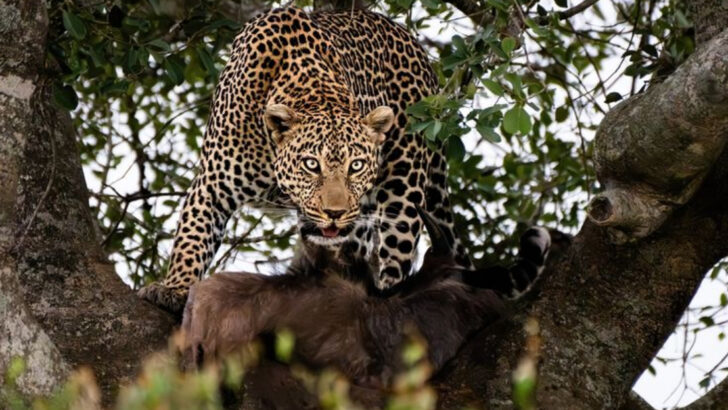Some cats don’t just chase prey—they conquer it.
We’re not talking about swatting mice or stalking birds. These beasts take down buffalo. Wild boar. Even animals twice their own size.
Their jaws crush. Their claws hook deep. Their stealth is terrifying. And once they strike, the fight is over before it begins.
From icy mountain shadows to blazing savannahs, these big cats dominate their territories with brute strength and fearless precision.
Forget the housecat napping on your windowsill.
These are the true kings and queens of carnage.
And they don’t ask for permission—they take what they want.
Ready to meet the heavyweights of the feline world? Let’s go.
Bengal Tiger
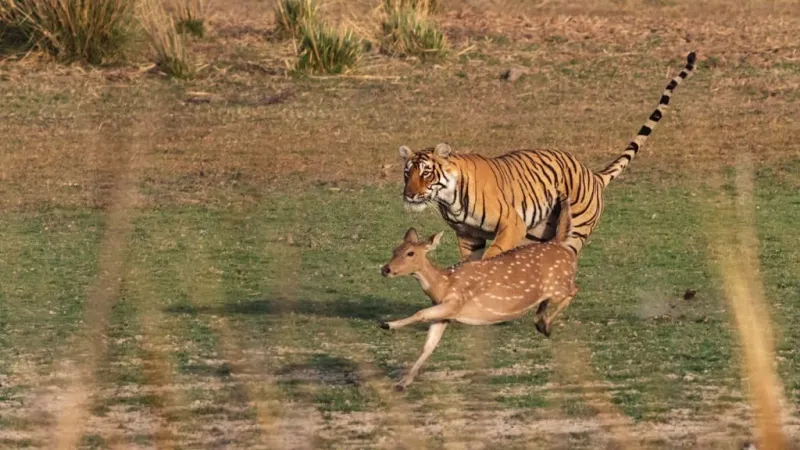
Every step the Bengal Tiger takes resonates with power and grace. This apex predator is known for its ability to hunt buffalo and gaur, creatures much larger than itself.
With its keen senses and silent stalking, the Bengal Tiger can ambush prey with a burst of speed and strength. Its powerful limbs and sharp claws make it a formidable hunter.
Interestingly, these tigers have territories that can extend over hundreds of square miles, where they reign supreme as the top predator.
Siberian Tiger
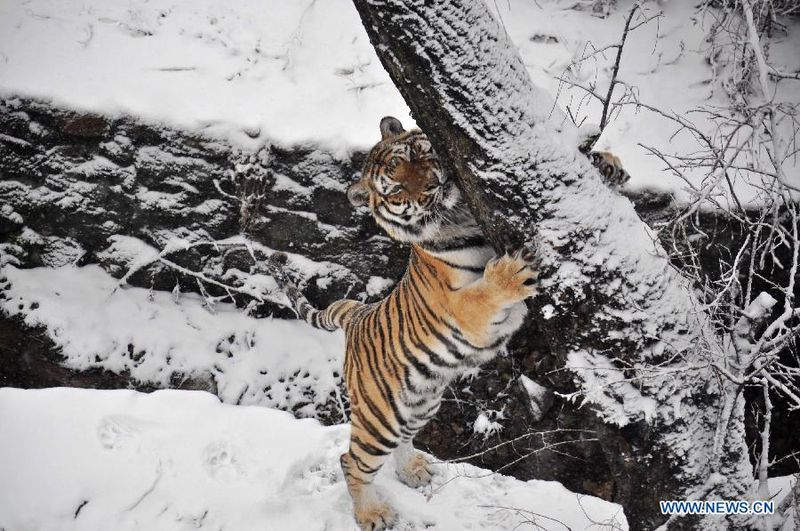
The Siberian Tiger, with its impressive size and strength, dominates the snowy landscapes of the Russian Far East. Its immense power allows it to hunt elks and bears, animals that dwarf even this large cat.
Known for its resilience, the Siberian Tiger has adapted to harsh climates, relying on stealth and strategy to catch its prey. Its thick fur aids in survival against the cold.
Remarkably, this tiger’s roar can be heard over a mile away, instilling fear in its territory.
African Lion
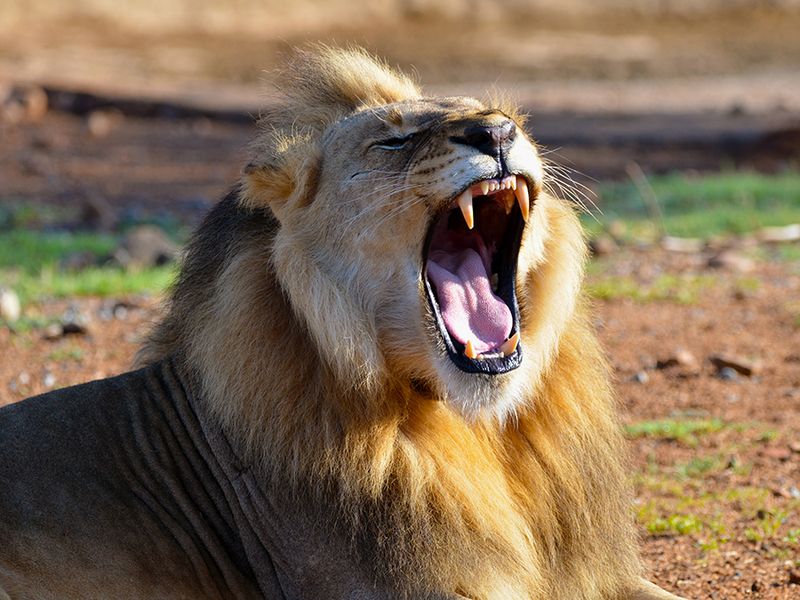
The African Lion, often dubbed the King of the Jungle, rules the savannah with unmatched prowess. Lions work in prides, collaborating to hunt large prey such as buffalo and giraffes.
Their social structure is key to their hunting success, coordinating and executing strategic maneuvers. The male’s mighty roar signals dominance over its domain.
Did you know? The darker a lion’s mane, the more attractive it is to potential mates, signifying strength and virility.
Jaguar
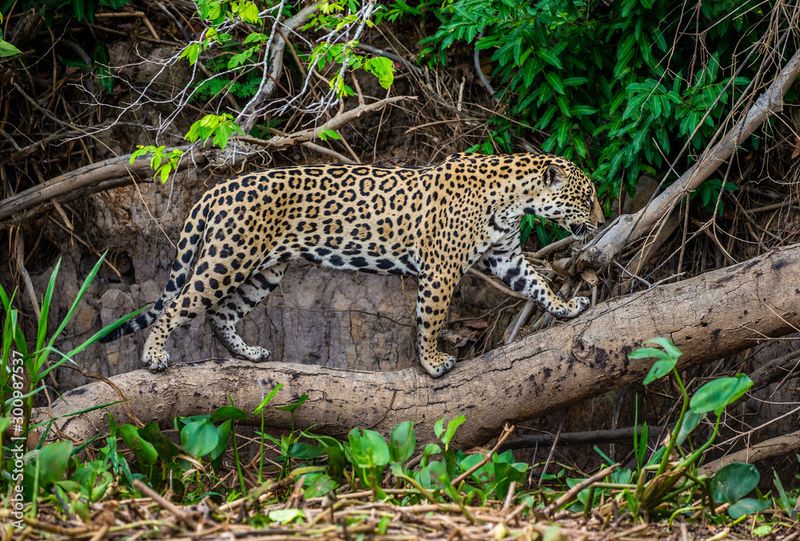
With a bite that can pierce turtle shells, the Jaguar is a symbol of power in the Americas. This stealthy cat excels in both terrestrial and aquatic hunts.
The Jaguar’s ability to hunt large caimans and tapirs showcases its formidable strength. It employs ambush tactics, often leaping from trees for a surprise attack.
This cat’s jaw strength is unmatched, allowing it to penetrate even the toughest hides, making it a fearsome predator.
Leopard
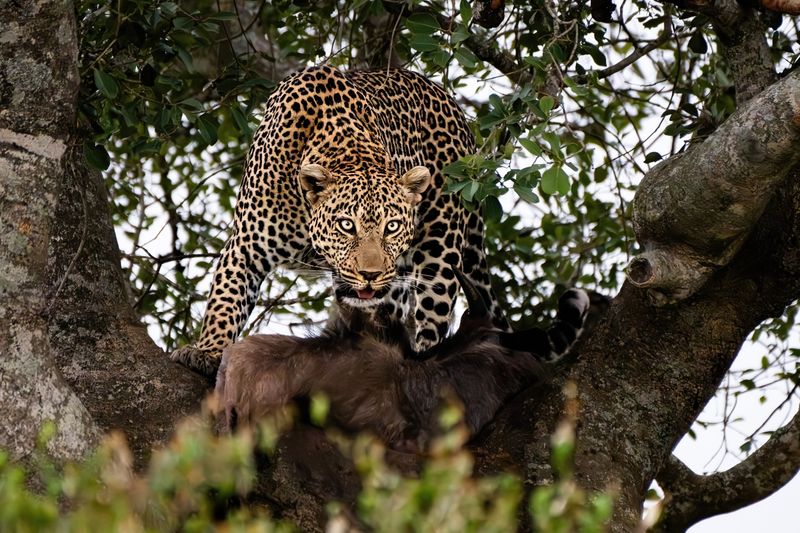
Known for its adaptability, the Leopard thrives in diverse environments from African savannahs to Asian forests. Its stealth and strength allow it to hunt animals larger than itself.
The leopard’s hunting strategy includes dragging heavy prey up trees to avoid scavengers, showcasing its incredible power and cunning.
Despite being solitary, leopards maintain vast territories, marked by their scent, to ensure a steady supply of food.
Cougar
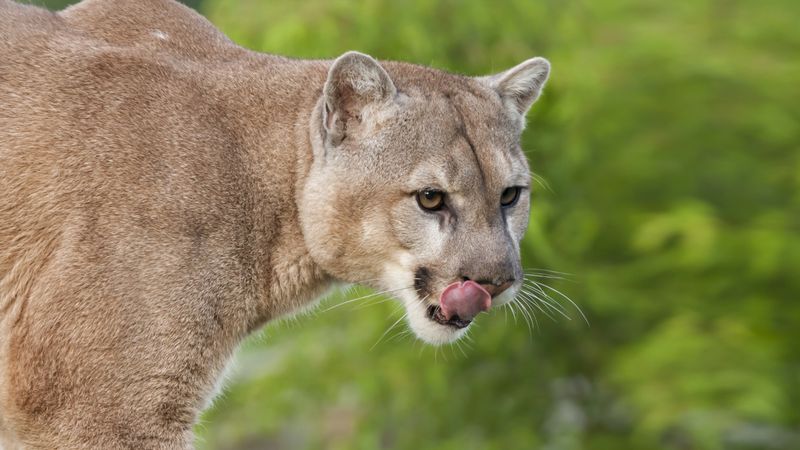
Often called the mountain lion, the Cougar’s adaptability ensures its presence from the Canadian forests to the Patagonian mountains. Despite its name, it is more closely related to small felines.
Its powerful legs enable it to leap great distances and take down deer, often twice its size. The cougar’s stealth is key to its hunting prowess.
Fascinatingly, cougars are excellent swimmers, which aids in their diverse hunting techniques across varied terrains.
Snow Leopard
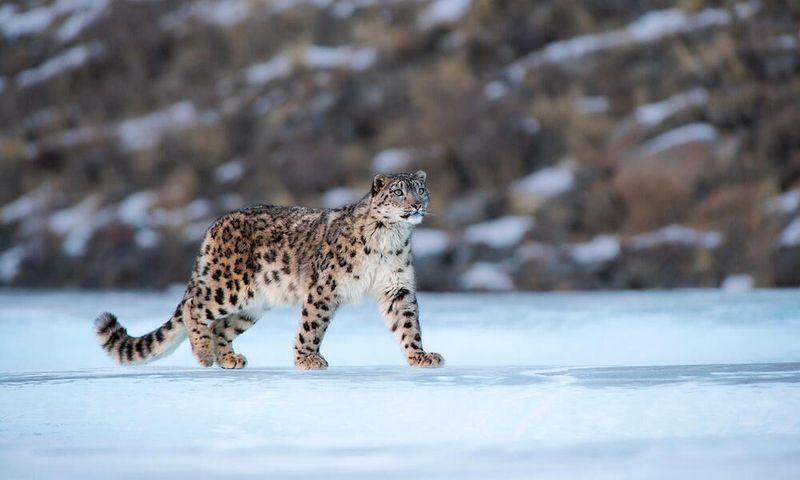
In the high altitudes of Central Asia, the Snow Leopard reigns supreme. Its long tail and powerful limbs allow it to traverse the rugged, snowy landscapes.
The Snow Leopard’s incredible jumping ability helps it ambush large prey such as ibex and blue sheep in the challenging alpine environment.
A curious fact: the snow leopard cannot roar like other big cats, adding to its elusive mystique.
Cheetah
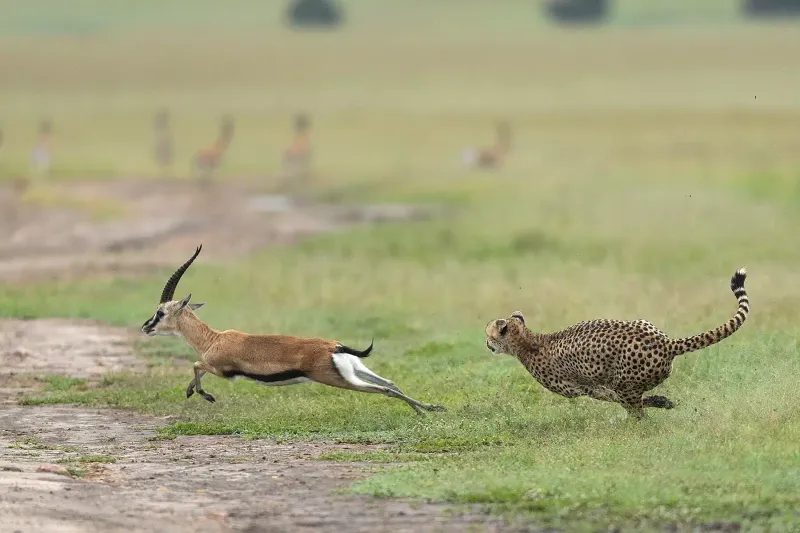
Renowned for its speed, the Cheetah is the fastest land mammal, capable of reaching speeds up to 60 mph in seconds. This feline’s acceleration is unmatched, making it a formidable hunter on the African plains.
Cheetahs often hunt during the day, using their keen eyesight to spot prey from a distance before launching a high-speed chase.
Interestingly, their non-retractable claws provide extra grip during high-speed pursuits, a unique adaptation among big cats.
Eurasian Lynx
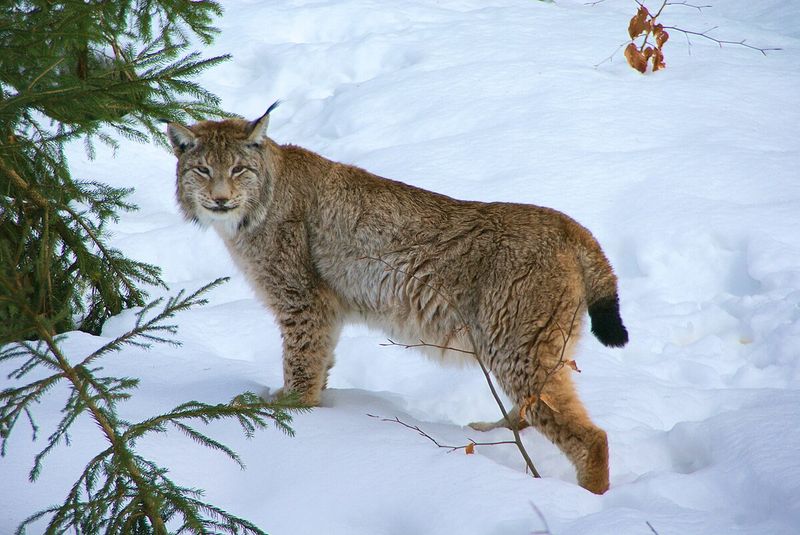
The Eurasian Lynx, with its distinctive ear tufts and short tail, is a master of stealth in the European and Siberian forests. This elusive cat preys on deer, often double its size, using its acute senses and patience.
Lynxes rely on surprise, stalking their prey silently before a sudden pounce. Their powerful hind legs contribute to impressive leaps.
Despite their solitary nature, lynxes maintain vast territories, ensuring ample hunting grounds for survival.
Clouded Leopard
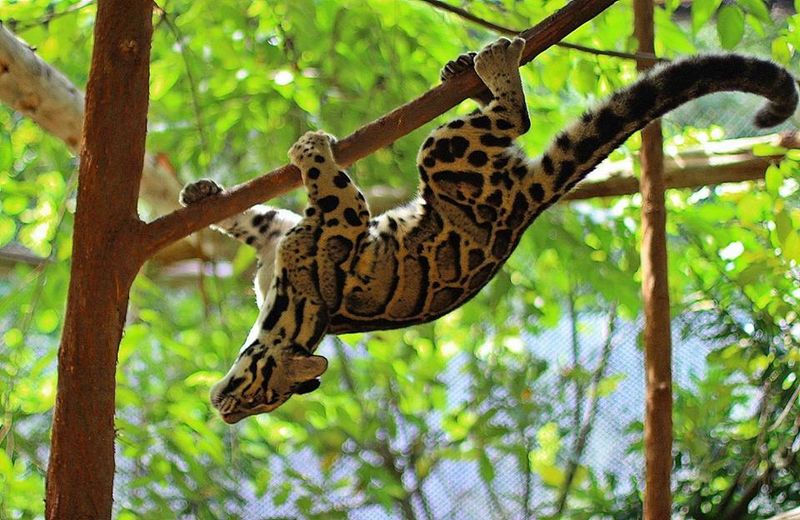
With its long canine teeth and agile body, the Clouded Leopard is an arboreal predator of Southeast Asia. Its ability to hunt larger prey like deer is a testament to its power and agility.
These leopards are adept climbers, often seen hanging upside down from branches, a skill that aids in ambush tactics.
Intriguingly, the Clouded Leopard’s anatomy is uniquely adapted for life in the trees, making it one of the most mysterious big cats.
Puma
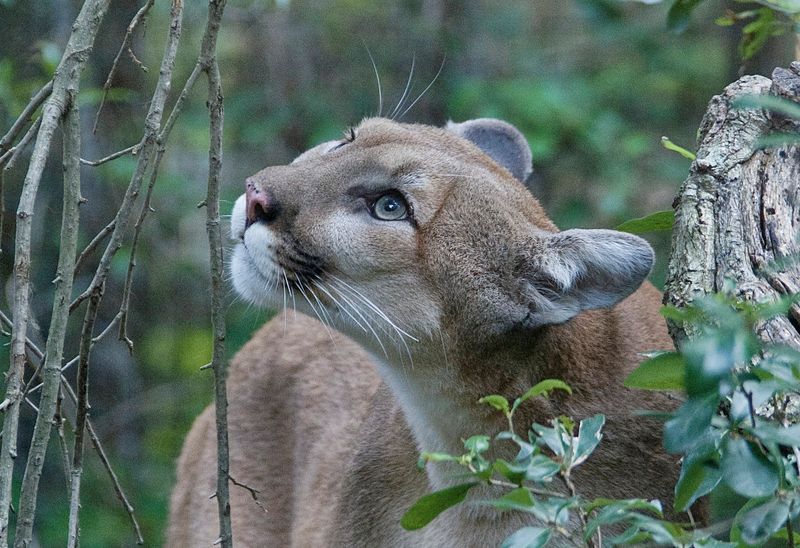
The Puma, also known as the mountain lion, roams vast territories across the Americas. Its adaptability allows it to thrive in various environments, from forests to deserts.
Pumas are powerful hunters, capable of taking down deer and livestock, utilizing stealth and strength for a successful hunt.
A fascinating fact: unlike most big cats, pumas cannot roar but instead communicate with whistles, growls, and purrs.
Caracal
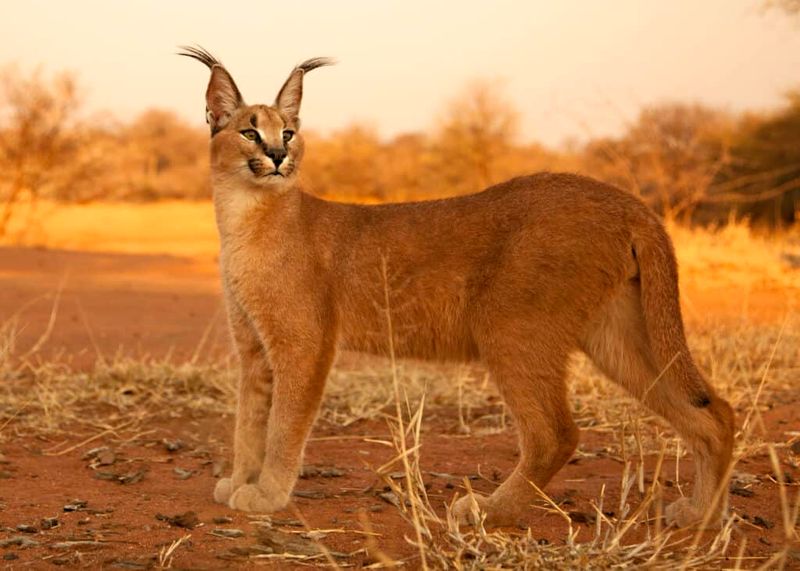
Graceful and agile, the Caracal is known for its remarkable leaping ability, capable of catching birds in mid-air. This cat is a master hunter of the African and Middle Eastern savannahs.
Caracals often hunt at night, using their acute hearing to locate prey, which can include animals larger than themselves.
Interestingly, their name comes from the Turkish word “karakulak,” meaning “black ear,” highlighting one of their most defining features.
Serval
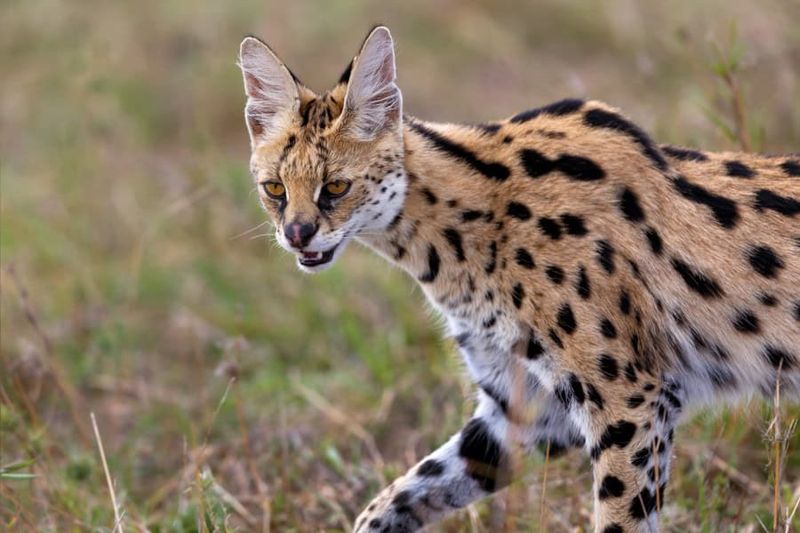
With its long legs and large ears, the Serval is a skilled hunter of the African grasslands. Its ability to leap high into the air to catch birds mid-flight is truly remarkable.
Servals rely heavily on hearing to locate prey, often hunting rodents, birds, and even larger animals like hares.
This cat’s unique adaptation allows it to thrive in the savannah, where it uses both stealth and speed to secure food.
Fishing Cat
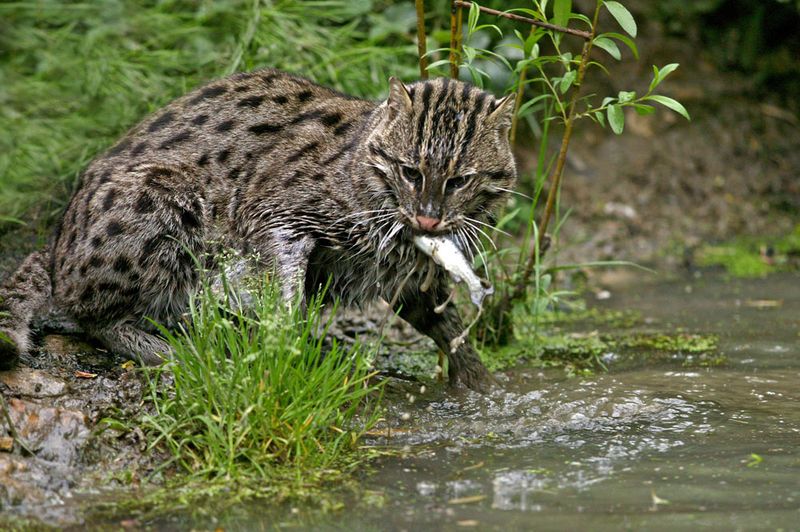
Unique among felines, the Fishing Cat is specially adapted to aquatic environments. Found in the wetlands of South and Southeast Asia, it hunts fish, birds, and rodents.
Fishing cats can swim long distances, using their webbed feet to navigate water efficiently. This ability allows them to hunt prey larger than themselves.
A quirky fact: fishing cats have partially retractable claws, aiding in their fishing prowess and setting them apart from other cats.
Indochinese Leopard
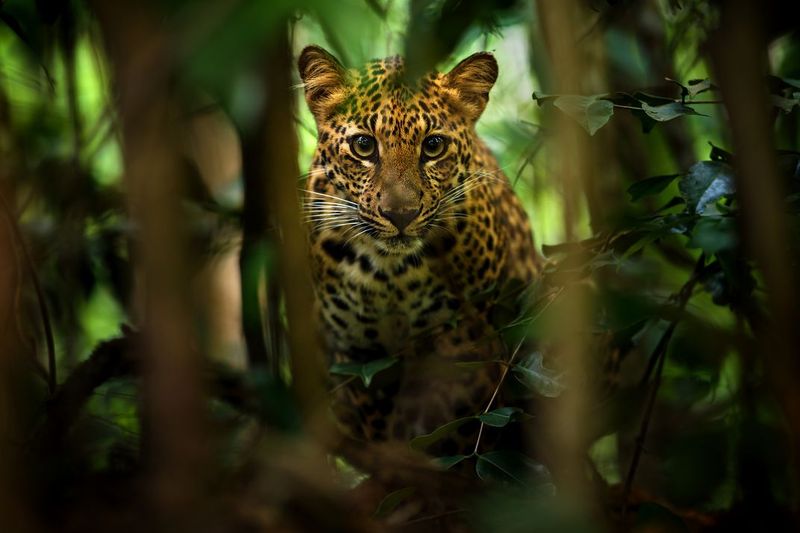
In the dense forests of Southeast Asia, the Indochinese Leopard is a stealthy predator. Its powerful build allows it to hunt larger prey, such as deer and wild boar, demonstrating its strength.
These leopards are primarily nocturnal, relying on night vision and stealth to surprise their targets.
Despite their solitary nature, Indochinese leopards are essential to their ecosystem, controlling prey populations and maintaining balance in their habitat.
Asiatic Lion
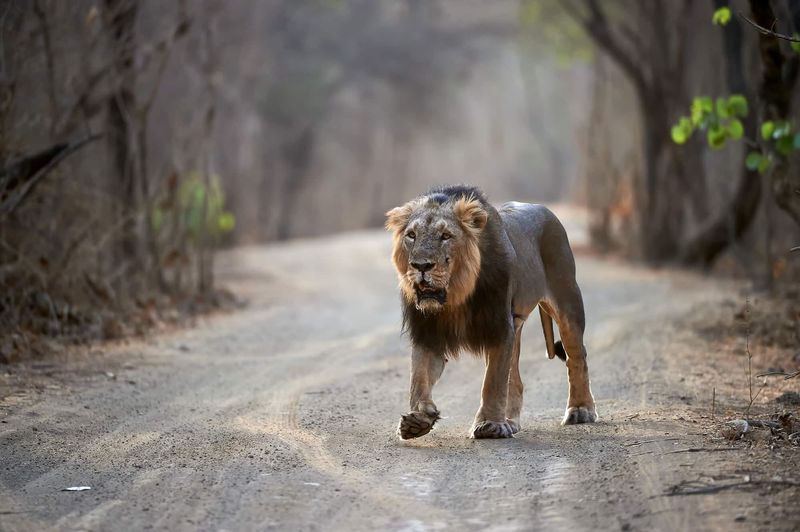
The Asiatic Lion, once roaming the vast stretches of the Middle East to India, now finds its home primarily in the Gir Forest National Park. These lions are slightly smaller than their African cousins but are no less formidable.
With a distinct fold of skin along their bellies and shorter manes, they possess a unique charm that sets them apart. These cats have adapted to hunting large prey like buffalo and sambar deer, using teamwork and strategy to bring down animals twice their size.
Their survival story is one of hope, as conservation efforts in India have helped stabilize their population numbers.

